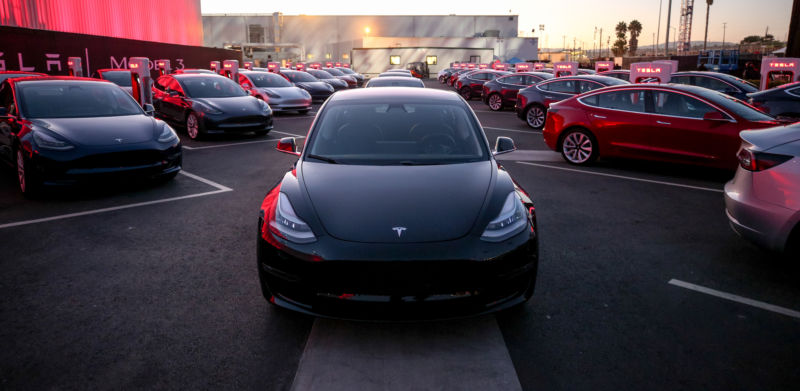
Tesla made its reputation—and rebuilt that of the EV—on the backs of the Model S sedan and Model X SUV, high-end vehicles that have done a lot to dispel the idea that an EV has to be a hair-shirt experience. But it has a very different task at hand with the Model 3, which must sell at a far lower price and in much greater volume. That has meant an obsessive approach to cost reduction, requiring some design choices that have not gone down well with everyone. But the more I consider what the company has done, the more impressed I am. Assuming the early takes and my gut instinct are accurate, Tesla deserves to sell them in the millions.
What kilowatts?
While I have your attention, I do have one gripe about the Model 3 I would like to get on the record, and it concerns how we talk about batteries. As expected, the Model 3 is available with a choice of two different battery packs, and I was wrong—the bigger battery isn't just a software-unlock away. Unlike the Model S and Model X, the 3 will use Tesla's 2170 cells. The 2170s are larger than the 18650 cells even though they cost less to produce and have almost double the energy density (6,000mA compared to 3,000mA, according to InsideEVs). But just what the battery specs are for the Model 3 variants remains unknown. The event and Tesla's press kit simply describe them by range: 220 miles or 310 miles.
Tesla says it wants us to talk about range and not kilowatt-hours (kWh), but I just can't see the logic. For one thing, as several of us on staff have found out, an EV's specified range and the actual number of miles we can drive it before reaching empty are often quite different. EVs are great in urban traffic at low speeds with plenty of stop-and-go; on the freeway, you quickly discover that drag increases in a non-linear function, and cruising at even 80mph will deplete those cells much faster than at 70mph.
For another, Tesla isn't playing in this space alone. Using kWh as a way to quickly and easily gauge the size of a car's battery has now become the accepted way of knowing how much juice a given EV has in its (lithium-ion) tank. But a gripe about the language the company uses to describe its battery capacity isn't much of a gripe at all.
This one sounds like it's fun to drive
Although our own first drive of the Model 3 was a limited experience—a quick blast up one exit up the freeway then back, lasting a few minutes—Motor Trend's Kim Reynolds got a much longer go behind the wheel the day before the big event. And by the sounds of things, the Model 3 is actually fun to drive.

Cost-cutting is almost certainly a factor here. Ditching the complex and expensive air suspension in favor of conventional springs and coil-over dampers was one design choice. (Yes, we know technically air suspension was optional on the S and X, but a quick check of the Tesla configurator reveals it to be standard equipment now.) Doing away with the front motor-generator unit and making the Model 3 rear-wheel drive (for now) is another such choice. Yes, rear-wheel drive makes the 3 easier and cheaper to build, for it has never been the case of simply using two of the same motors and putting one between each axle—the front and rear motors on the "D" version Model S and Model Xes have always been different units.
But making all-wheel drive cars fun to drive also takes a fair amount of vehicle dynamics tuning and hard work from the engineers. Our experience with various twin-motor Model Ses has been that the car's traction control errs very much on the side of caution, preferring to cut torque to a wheel instantly rather than allowing even the slightest slip angle or amount of wheel spin.Obviously, we'll need a proper drive—preferably in the confines of a closed track—to confirm Reynolds' take on the Model 3's fun factor. And a go in the future all-wheel-drive Model 3 variant to make sure. But having met Reynolds in the past, I feel confident in trusting his judgement when he says it's good to drive.
reader comments
474